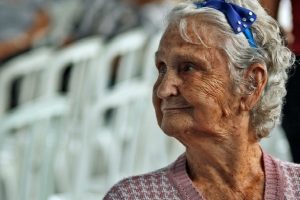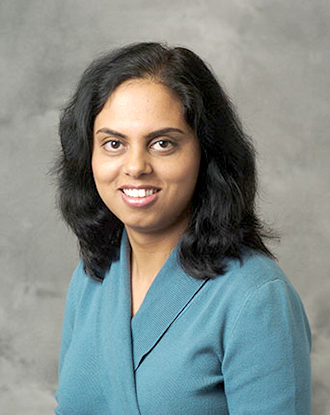Osteoporosis, a silent disease

Like high blood pressure, osteoporosis, or porous bone, is a silent disease that can have devastating effects. A disease that can result in serious fractures, osteoporosis is a major public health threat for 44 million Americans, 68 percent of whom are women. In the U.S. today, 10 million people already have osteoporosis and 34 million more have low bone mass, placing them at increased risk for this disease.
Dr. Shailaja Reddy, an internal medicine physician at Pacific Medical Center’s Renton clinic, said, “It’s a major problem. The first indicator you get is a fracture and if you are age 75 or 80 and you have a hip fracture it may take months to recover from it,” she said.
The message Dr. Reddy drives home with her patients is one of awareness and prevention. “Get your calcium and exercise, even if you’re in your forties. If you do this consistently from a younger age it will help you down the road,” she said. Paying attention to Dr. Reddy’s message makes sense; osteoporosis is responsible for 1.5 million fractures annually, including 300,000 hip fractures.
As with many illnesses there are certain risk factors that may indicate whether a person will develop the disease. The chance of developing osteoporosis is greater for women because they have less bone tissue and lose bone faster than men because of the changes that occur with menopause.
While many people may think of osteoporosis as a woman’s disease, men can be at risk, too, Dr. Reddy said. “Anyone who is slim and weighs less than 127 pounds is at risk,” she said. Smoking cigarettes and drinking excess alcohol (more than three glasses daily) are also factors. In addition, the older you are, the greater your risk of osteoporosis.
While there is no gene that’s been found to be associated with the disease there is a family tendency toward it. “If you have a first degree relative with osteoporosis you are at high risk,” warned Dr. Reddy.
Getting enough calcium in the diet is key to prevention, she said. Women who are past menopause should take 1200 mg. daily of calcium in divided doses.
“That’s really important. If you take all 1200 mgs at once your body can’t absorb it all,” she said, adding that it’s important to take between 600 and 800 international units of Vitamin D daily. Without the Vitamin D calcium can’t be absorbed. Dr. Reddy noted that because of the many gray days in the Pacific Northwest, vitamin supplements may be the answer because sunlight is required to naturally produce Vitamin D.
The type of exercise needed to prevent osteoporosis is weight-bearing exercise such as walking, jogging, weight training, hiking or yoga. Being sedentary and not taking calcium raises the risk of bone loss. So does long-term use of glucocorticoids.
Want to know the status of your bone health? Your best bet is a bone mineral density test to identify osteoporosis, determine your risk for fractures and measure your response to osteoporosis treatment. The most widely recognized bone mineral density test is a DXA test, a painless test similar to an X-ray but with much less exposure to radiation.
Dr. Reddy said that Fosamax, Actonel and Boniva are the class of drugs that have been shown to be most effective. Fosamax and Actonel are taken weekly while Boniva is a newer medication that is taken monthly. Dr. Reddy advises her patients to take one of the two weekly medications first because they have been proven over many years to be both safe and effective. “Other medications are also available for treatment- be sure to discuss with your doctor what will work best for you,” said Dr. Reddy.



